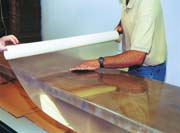
A non-stick sticky tape!
An apparent contradiction. How do you get a pressure sensitive adhesive to permanently bond to a fluoropolymer film whose ultimate use is to create a non-stick surface? Cold gas plasma treatment makes it possible to apply pressure sensitive adhesives that will tenaciously bond to the permanently modified surface of any fluoropolymer film.The virtues of chemical inertness and low surface energy that make polytetrafluoroethylene (PTFE) and its copolymers valuable engineering polymers also account for the difficulty in achieving chemical bonds. These materials are typically etched or flame treated to enable physical bonding to an adhesive. These methods create temporary changes to the surface that do not bond well to a respective adhesive upon exposure to UV, moisture, chemicals and/or thermal stresses. This inability to produce permanent, strong bonding between an adhesive and the etched or flamed surface has limited the way these very useful base polymers have been used in industry.
In the late 1980s, researchers at SUNY at Buffalo discovered that radio frequency (rf) glow discharge (cold gas plasma) of hydrogen in combination with vaporized liquids provided unique surface modification of fluoropolymer materials. Through the use of hydrogen plasma as a fluorine scavenger in conjunction with vaporized liquids, oxygen incorporation into the surface matrix of PTFE could be well controlled. The modified surfaces retained morphology, chemical resistance and hydrophobic properties to degrees similar to those of the original, unmodified material.
However, the oxygen functionalities were found to be surprisingly chemically reactive and permanent. It is this chemical functionality that permits a wide variety of pressure sensitive adhesives (PSAs) to bond covalently to the fluoropolymer surface. It has been found that the bond between the modified surface and the adhesive is stronger than the bond between the adhesive and the substrate that has been bonded to, even upon exposures to temperature cycles, UV, humidity and a wide range of chemicals.
Integument Technologies, Inc., exclusively in-licensed the patented plasma process from the Research Foundation of SUNY for commercial exploitation. However, the work at SUNY was limited to very small swatches of film, not atypical of early-stage university R&D work. Integument was faced with the daunting challenge of scaling this technology into commercially acceptable sizes, capacity and cost structure. Integument elected to work with 4th State, Inc., who was able to deliver reproducible and economically viable performance on continuous roll goods up to the 60"-width limit of its equipment.
Plasma Surface Treatment
A plasma is a low-temperature glow discharge or a low-pressure, partially ionized gas consisting of a concentration of highly excited atomic, molecular, ionic and free-radical species. Excitation of the gas molecules is accomplished by subjecting the gas, which is enclosed in a vacuum chamber, to an electric field, typically of radio frequency energy.The imposed rf field excites the molecules, creating free electrons, which collide with neutral gas molecules as they gain energy from the imposed field and transfer energy. The collisions and transfer of energy form numerous reactive species. These particles interact with solid surfaces placed in the plasma. This leads to dramatic modifications of the molecular structure, which with the judicious selection of process gas provides the desired surface properties.
In this application specific for halogenated polymers, hydrogen in combination with liquid oxygen contributing co-reactant is used as the plasma. This combination partially dehydrohalogenates the fluoropolymer surface and creates permanent, stable oxygen moieties at these defluorinated sites. These oxygen moieties adjacent to fluorinated carbon groups are very stable, but chemically reactive with certain species. This reactivity is ideal for forming tenacious bonds with selected adhesives.
FluoroGrip Film
As mentioned previously, fluoropolymers are typically etched or flame treated to create transient bonding to a pressure sensitive or other adhesive. At ambient conditions, these bonds are more than adequate for most applications. But once subjected to an external stress, the bond between the adhesive and the film will fail. The etched or flamed surface will lose its mechanical bond to the adhesive and the film will curl off the adhesive leaving the adhesive behind on the substrate. This limits the industrial utility of these products.FluoroGrip, in contrast, bonds chemically and permanently to an adhesive. The FluoroGrip surface is not etched, roughened or substantially changed. The bonds hold up to a wide variety of industrial stresses without delaminating from the adhesive. In fact, the weak point in the FluoroGrip system is not the adhesive-to-modified-fluoropolymer interface, but instead is the adhesive-to-substrate bond. The FluoroGrip surface allows the adhesive to perform to its utmost capability, greatly expanding the use of bondable fluoropolymers as easy-to-install, permanent linings in industry.
Fluoropolymer modified using the patented cold plasma is permanently modified. Thus FluoroGrip film that has been treated on both sides may be wrapped, layered or seamed in the field providing permanent bonds. Etched and flamed products do not offer this extremely useful attribute because their surfaces rearrange quickly after modification.
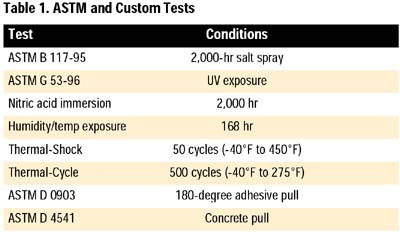
Testing/Evaluation
What supports these assertions? FluoroGrip products have been thoroughly evaluated in a variety of ASTM and custom tests as shown in Table 1. Due to space limitations, a few of these tests have been selected and the data presented as follows. Please contact Integument for additional test information.
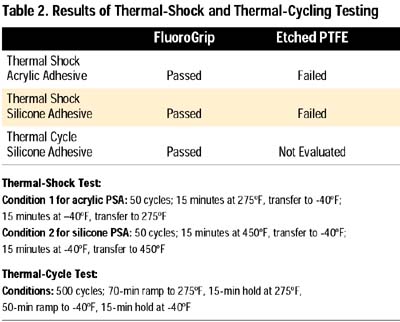
Evaluation #1: Thermal Shock and Thermal Cycling
Temperature cycling is a classic enemy of etched and flamed fluoropolymer surfaces. Temperature typically causes these surfaces to lose their surface treatments and therefore debond from their accompanying adhesive.FluoroGrip was tested side-by-side with sodium naphthalene-etched PTFE film. Films were surface treated and laminated with either acrylic PSA or silicone PSA. All samples were mounted on smooth, 32-mil carbon steel plaques. FluoroGrip samples were modified on both sides and overlapped, creating a seam. The results revealed a pronounced difference in performance. (See Table 2.)
Thermal cycling of sodium-etched PTFE causes the surface to lose its modification. As a result, the bond between the adhesive and the film breaks down. The breakdown of the bond between the adhesive and the film and the delamination resulting from thermal-shock testing demonstrates why etched films cannot be used as permanent liners. Thermal-shock testing and thermal cycling have no effect on FluoroGrip.
Two pieces of FluoroGrip were overlapped for these tests, and thermal shock testing and thermal cycling did not break down the bond between the two pieces of film.
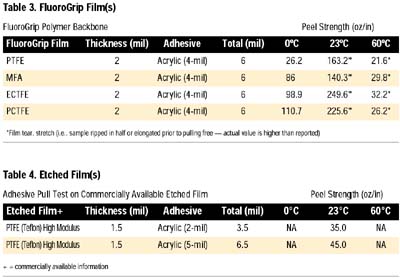
Evaluation #2: Adhesive Pull Test
Method: ASTM D 0903Four different fluoropolymer films were modified using the plasma described above and laminated to acrylic PSA. The films were peeled per the standard conditions described as follows.
Conditions: The average values were obtained for 10 samples (each) of FluoroGrip film pulled at 0ºC, 23ºC and 60ºC. The samples were applied with vigorous thumb pressure to smooth, 32-mil carbon-steel panels. Samples were allowed to adhere for 24 hours before testing with 180° pull at a cross-head speed of 152 mm/min.
The peel data shown in Table 3 and Table 4 reveal that the FluoroGrip films bond at least four times as strongly as etched films in this particular test. It is also notable that at 0°C and 60°C the FluoroGrip registers peel values almost as high as, and in some cases higher than, the peel values for etched film at room temperature. Additionally, at these temperatures the etched films peeled off their adhesives, leaving the adhesive on the panel prior to registering a value.
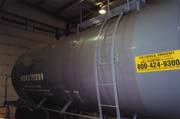
Summary
Plasma-surface technology allowed the creation of a product that combined the unique characteristics of a non-stick, chemical-resistant barrier film and a quality pressure sensitive adhesive film. The plasma surface modification creates reactive functionality on the surface of the fluoropolymer film, which can be covalently bonded to appropriately chosen commercial pressure sensitive adhesives. The covalent chemical bonds provide an environmentally stable and permanent bond between the adhesive film and the fluoropolymer substrate, providing performance unachievable by any other surface modification technique.The authors thank Advanced Plastics Materials Testing, Inc., Ithaca, N.Y., and Ocean City Research, Ocean City, N.J., for performing the independent testing of these products.
Additional information on plasma treatment systems is available from 4th State Inc., 1260 Elmer St., Belmont, CA 94002-2806; call 650-596-1600; fax 650-596-1604; visit the Web site www.4thstate.com; or e-mail cynthia@4thstate.com.
Additional information on FluoroGrip film is available from Integument Technologies, Inc., 70 Pearce Ave., Tonawanda, NY 14150; call 716-873-1199; fax 716-873-1303; e-mail info@integument.com.